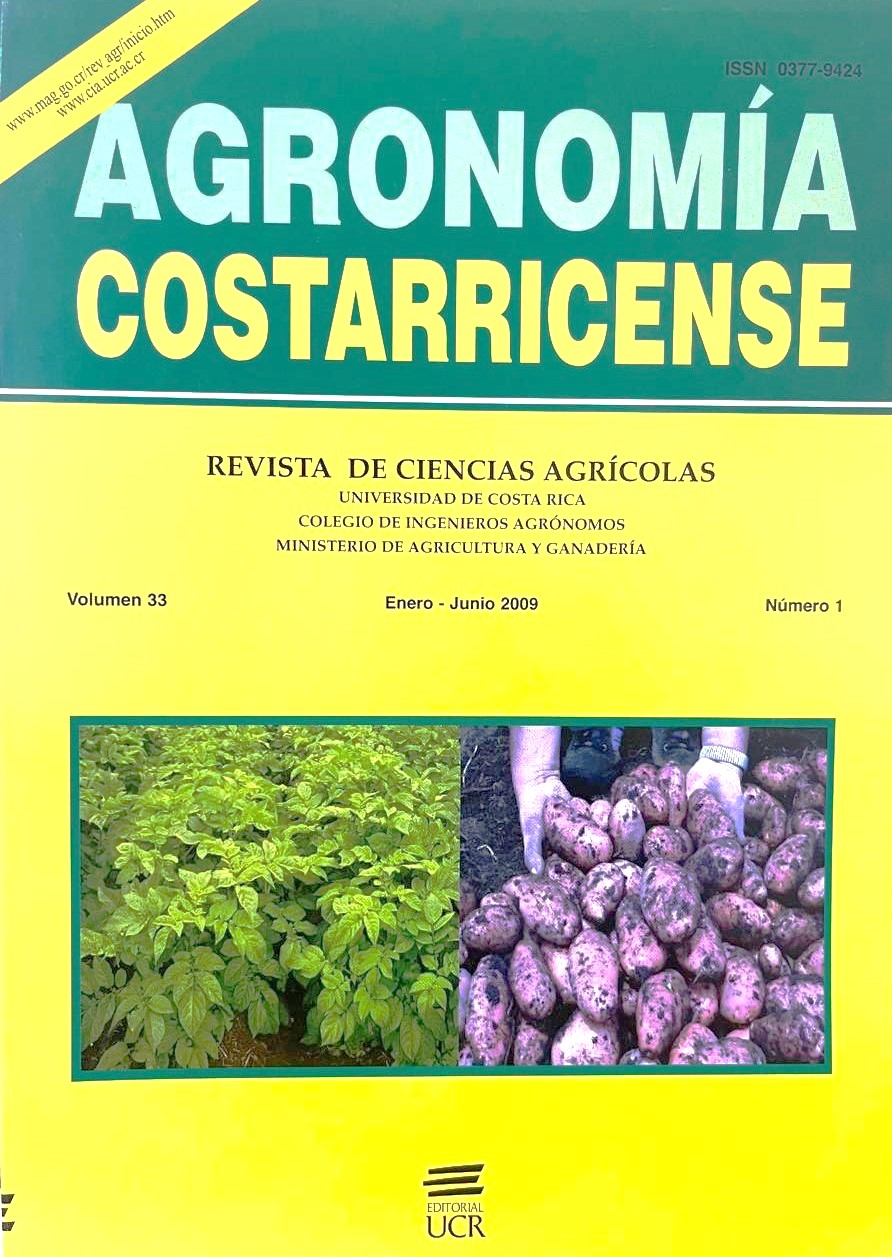Abstract
The aim of this research was to evaluate the response of 4 forest tree species to Glomus fasciculatum, inoculated at nursery and field stages. At nursery stage the diameter above ground, total height, dry leaf and root weight, and nutrient intake by leaves and roots were evaluated. In the field total height, diameter, and leaves’ nutrient intake were quantified. Results showed that at the nursery stage inoculated ronrón (Astronium graveolens), teca (Tectona grandis), and amarillón (Terminalia amazonia), presented the average highest increases with 48.9, 35.2 and 30.6%, respectively; whereas in melina (Gmelina arborea) the increase was only 16.9%, registering significant differences in leaf and root dry weight. Overall, dry weight increases of leaves and roots showed the highest values, with 30.8 and 63%, respectively. Regarding nutrient absorption, ronrón showed significant differences in Mg, Cu, Zn, Mn, and Fe in leaves and roots; however, melina was the species with the highest nutrient concentrations, even though not statistically significant; the rest of the species did not register significant differences. At field stage, among the inoculated species, melina was the only one showing significant differences in diameter and total height, with 37.9 and 31.7% increases, respectively. Average nutrient absorption by melina, amarillón, and ronrón was 32.2, 19.8 and 6.6%, respectively; with the highest absorption in Ca, Mn, K and Fe. Mortality at the nursery stage was zero; whereas in the field, it varied according to the species and treatment. The increase in growth of the 4 species was the common tendency, when G. fasciculatum was used, except in teca, which did not show positive results in the field.
##plugins.facebook.comentarios##

This work is licensed under a Creative Commons Attribution-NonCommercial-NoDerivatives 4.0 International License.
Copyright (c) 2016 Agronomía Costarricense


